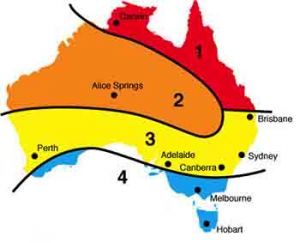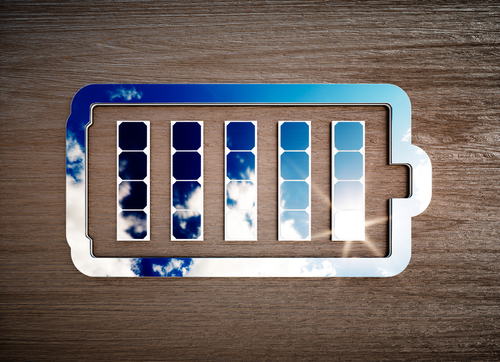South Australians are charged the highest electricity rates in the country, so it’s no wonder that nearly one in three SA households have installed solar panels. Solar is a great way to reduce those eye-watering power bills, all the while improving your home’s energy self-sufficiency, minimising its environmental impact, and even improving its value.
If you’re looking to install solar for the first time or simply want to upgrade your current system, this article will walk you through everything you need to know about solar power in South Australia.
On this page:
- How much do solar panels cost in South Australia?
- SA Solar Plans
- How many households have solar in South Australia?
- South Australia Solar Rebates and Incentives
- Feed-in Tariffs in SA
- SA solar companies offering feed-in tariffs
- Solar batteries in South Australia
- Is it worth getting solar in SA?
- FAQs about solar in SA
Advertisement
How much do solar panels cost in South Australia?
The hefty price tag unfortunately remains a major impediment for those looking to install solar panels. Typically, a South Australian household can expect to pay between $3,300 and $8,600 for a new solar system fully installed. This, of course, depends on the make and size of the system. For a smaller system (3kW and under), you shouldn’t expect to pay any more than $3,000. If you’re in the market for a much larger system – say 10kW – then it might cost upwards of $8,500.
The following table shows the average cost of solar systems in South Australia compared to the national average:
| 3kW | 4kW | 5kW | 6kW | 7kW | 10kW | |
|---|---|---|---|---|---|---|
| SA | $3,350 | $3,900 | $4,420 | $4,890 | $6,010 | $8,670 |
| National Average | $4,270 | $4,920 | $5,640 | $6,460 | $7,440 | $10,390 |
Source: Solar Choice Price Index – July 2023, Solar Choice. Prices are after applied STC discounts and GST.
These prices reflect estimated costs within Adelaide, SA. The actual cost of your solar panels can vary greatly depending on where you are, what system you’re after and your installer. For a specific quote, get in touch with your preferred installation specialist.
SA Solar Plans
Here are some of the cheapest solar-specific deals from the retailers on our database. These costs are based on SA Power network in Adelaide but prices will vary depending on your circumstances. We show one product per retailer, listed in order of lowest price first. Annual price estimates assume general energy usage of 4011kWh/year for a residential customer on a single rate tariff. Price estimates exclude solar feed-in tariff credits. This table includes products from referral partners†. Our database may not cover all deals in your area, and please check retailer websites for up to date information.
How many households have solar in South Australia?
Over 379,000 South Australian homes and businesses already have solar, according to the Clean Energy Regulator. In fact, excess solar power exported from rooftops to the grid has been recorded to account for as much as half the state’s energy demand.
South Australia Solar Rebates and Incentives
There are a few rebates on offer in SA to help you save on solar, as well as to see a much faster return on your investment. The main incentives discussed in this article are Small-scale Technology Certificates (STCs) and feed-in tariffs (FiTs).
Small-scale technology certificates in South Australia

Small-scale Technology Certificates are a form of rebate on the upfront cost of your solar system. Essentially, when you purchase solar panels, you will receive a number of certificates that can be sold for cash. The number of certificates you receive depends on the expected output of your solar system over its expected life.
Certificate numbers will also vary depending on your ‘zone’. As the diagram illustrates, most of South Australia, including Adelaide, is in Zone 3. The few South Australians that reside in Zone 4 will receive fewer certificates for their installation, while the few that fall into Zone 2 will receive more.
Feed-in Tariffs in SA
Through the day when your solar panels are producing electricity and no one is at home to use it, the excess power will flow onto the shared energy network. In return, you will receive what’s known as a ‘feed-in tariff’ – a rebate of around 5 to 10 cents for each kWh of electricity exported.
In addition to the savings made from using your own solar power, higher feed-in tariffs can help lower your bills further and help you recover the cost of your panels sooner. That said, a good FiT doesn’t always mean a good deal. For example, if you’re on a generous FiT, but you’re paying high electricity rates, then overall you could be paying more for power. When shopping around for an energy plan, be sure to consider a range of factors including the FiT, electricity usage and supply rates, discounts and other terms of the contract.
SA solar companies offering feed-in tariffs
The feed-in tariff that you receive for your solar power is not determined by the government, but rather the individual retailers. Fortunately for consumers, competition is fierce and there are plenty of solar deals in SA with generous FiTs on offer.
Solar batteries in South Australia

Installing a solar battery gives you the ability to store the electricity generated by your panels to use later on, rather than feeding power into the grid. The help to save on power bills by encouraging the use of stored, self-generated energy over using electricity from the grid.
Unfortunately, solar batteries remain quite expensive, with large self-contained batteries costing in the vicinity of $8,000 to $11,000. There are however smaller, modular batteries on the market that could provide some power bill relief for around $2,000.
A solar battery can help drastically reduce your home’s energy bills, however the large upfront cost of these systems mean they won’t always be a sound investment. Generally speaking, it will take about 10 years for a solar battery to recover its initial cost through electricity savings, however some batteries are not actually warranted to last that long.
Is it worth getting solar in SA?
Almost any South Australian could tell you how expensive electricity is, so solar power just makes sense. By reducing your dependence on grid electricity, you could save hundreds of dollars every year and likely recover the cost of your solar system in the long run. With that said, whether solar is right for your home is entirely dependent on your own circumstances, so be sure to carefully consider your own needs and get a quote to speak to an expert.
FAQs about Solar in SA
Solar panels obviously need sunlight to work, so solar is most effective in sunny areas and on unshaded roofs. If your roof is shaded by trees, consider if it’s worth having them pruned. Additionally, solar panels should ideally be installed facing north to maximise solar output. If don’t have a north-facing roof, or your roof is flat, then your solar installer may install brackets to help angle the panels correctly. This does however cost slightly more.
The typical rule of thumb is that a solar system can produce four times more electricity than its listed size. For example, a 4kW solar system should produce 16kWh on a sunny day.
A typical four-person household uses around 20kWh of electricity each day. If you wanted to match all your electricity consumption with solar power, then you would need a 5kW system. Smaller 1-2 person households typically use about 8 to 12kWh of electricity per day, in which case you probably don’t need a system any bigger than 3kW. If you’re installing a battery as well however, you might want to opt for a slightly larger solar system.
Solar panels generally last at least eight years, so it’s important to think long-term when shopping for solar. If you anticipate that your energy needs will change drastically in the future, then be sure to factor this into your purchase decision.
Unless you have an agreement with your landlord, if you are renter with solar panels, chances are you won’t be able to take them with you when you move again.
If you own an investment property however, the good news is that solar panels can appreciably improve the property value. In fact, realestate.com.au says renters are likely to pay more rent for a property with solar panels.
Like most states, you only require council approval to install solar panels in South Australia if it is going on a heritage listed building or visible from the street.
SA solar installers however, are required to submit an application for the installed network before it can import and export electricity on your behalf.
For more information visit the South Australian government’s website.
Origin Energy generally has one of the highest solar feed-in tariffs (FiTs) available to customers in SA. Not only does Origin have reasonably high feed-in tariffs, it also offers solar-specific deals tailored to households with solar panels. As always, some terms and conditions apply in order to receive a higher FiT rate.




Share this article